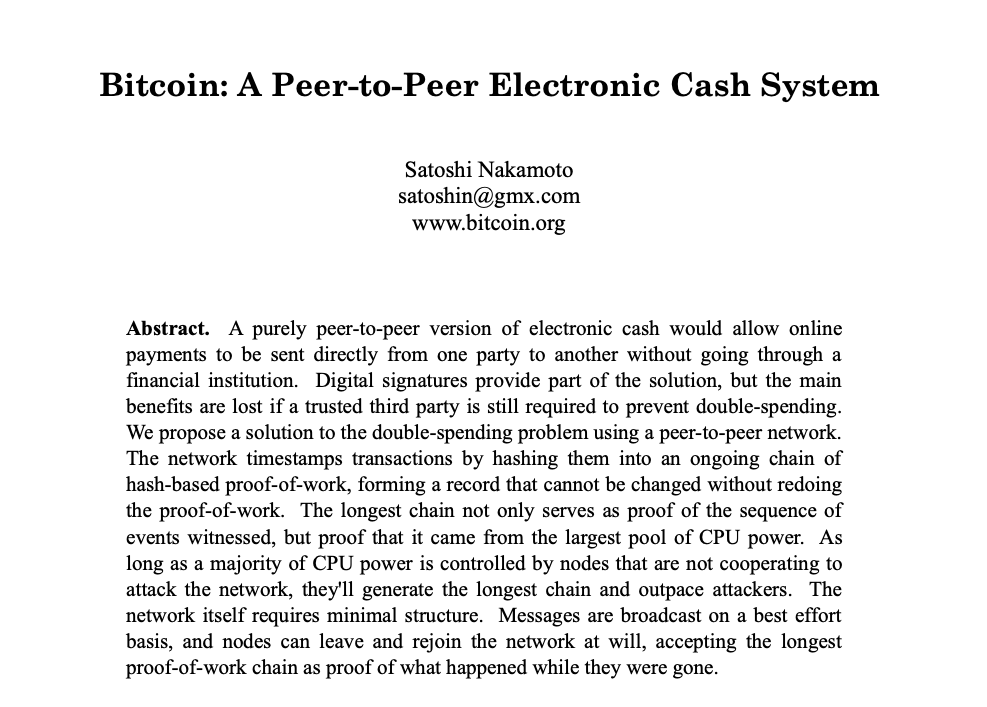“I am here for the technology!” That’s the claim of many crypto investors. What about you? Did you join the crypto space only because of the tempting profit opportunities? Or do you want to take part in the new digital revolution? Sometimes it’s good to put things in perspective. Take a step back from daily price volatility. Here is a quick guide about Bitcoin for dummies. These are the key concepts you have to know about the most valuable cryptocurrency on the market.
How Bitcoin works
Let’s start this Bitcoin for dummies guide from the basis. Bitcoin has born as an alternative payment system, also considered as the first cryptocurrency. Satoshi Nakamoto developed Bitcoin as a decentralised alternative to the traditional financial infrastructure. Bitcoin’s whitepaper, released back in 2008, is a must-read for everyone that really want to understand what Bitcoin represents in modern days.

As a beginner, you do not need to understand the technicalities of Bitcoin to use it. These are the two most important aspects to keep in mind.
- The network is fully decentralised. That means that all transactions are publicly accessible, and there is no central body that validates or manages the confirmations. You can read more about Bitcoin’s consensus algorithm here.
- Bitcoin’s supply is fixed. There will only ever be 21 million coins available on the market, introducing an element of scarcity that adds significant value to the network.
Why transactions are secure
Despite the information going around on the media about the volatility of cryptocurrencies, Bitcoin is more secure compared to some financial systems. The underlying technology, known as the blockchain, is a public and decentralised ledger secured by cryptography. Anyone can submit or validate a transaction with no censorship, as long as the participants respect the rules of the network.
Once a miner validates a block, all included transactions are virtually impossible to reverse. The more blocks follow the initial confirmation, the harder to manipulate those transactions.
Bitcoin’s network is designed to validate blocks every ten minutes. That is an average target. When sending a transaction, the network asks to indicate the max fee you are willing to pay to have the transaction confirmed. As miners have the incentive to mine blocks to collect the transactions fees, the higher the fee you commit to paying, the quicker will be the confirmations.
Transferring Bitcoins
Decentralisation and the lack of a middleman managing the transactions mean that you are fully responsible for every transfer.
The most important thing when transferring Bitcoin is the recipient’s address. As a rule of thumb for Bitcoin for dummies, you need to avoid some of the most common pitfalls to ensure that you have a safe transaction and avoid losing your funds.
- Always double-check the network you are using to make sure the destination wallet is on the same chain. Sending funds on the wrong network, such as sending Bitcoins to an Etheruem-based address, will lead to a loss of your coins.
- Always check the amount you are sending. Setting an excess of coins may result in a permanent loss. Unless if you know the recipient, you might never recover the extra coins you sent.
- Always pay attention to the destination address. Setting a wrong address will result in the loss of the funds. Also, beware of scammers or hackers that may try to change the destination address to steal your funds.
To avoid these mistakes and safeguard your funds, ensure to follow the steps to secure the transaction.
- 1. Copy and paste the address – this eliminates errors when writing the address.
- 2. Verify that the copied address exists – visit a blockchain explorer, paste the address in the search bar, and you will see if the address exists or not.
- Triple-check the address – ensure that the first and last characters of the address match the original wallet where you are sending the coins to.

Storing Bitcoins
There are various ways that you can store Bitcoin. Most beginners rely on exchanges to store their funds, but safety is dependent on the exchange’s security infrastructure. Exchanges are often hacked, and there is rarely safety insurance to protect your funds. For this reason, consider storing the coins only on large exchanges with a strong reputation. Also, if you are a long-term investor, holding coins on an exchange should be considered a temporary option, especially if you don’t make frequent transactions.
If you don’t know where to start from, Binance is an excellent option for beginners.
When holding coins on an exchange, you technically don’t own them. The exchange has a liability in your regards to allow you to access the funds upon your request. On the other end, you may consider moving your coins to a non-custodial wallet, which will enable you to have full control over your funds.
Best ways to store Bitcoin
The most secure way of storing bitcoins should be in a Bitcoin wallet. The different types of wallets include:
- Paper wallets – you print a private key or its corresponding QR code on paper, and you can keep it safe from spying eyes.
- Hot wallets – these are installed on your smartphone or PC and are connected to the internet, hence the name. Guarda is one of the best options to store Bitcoin and dozens of other cryptocurrencies.
- Hardware/Cold wallets – these wallets are not connected to the internet, so there is less risk for a hacker to steal your funds. Ledger is one of the most well-known hardware wallets on the market.
- Multi-sig wallets – these require more than one person to authorise the transactions. Think of it as a joint account where multiple signatures are requested to transfer or receive Bitcoin.
- Hierarchical deterministic (HD) wallets are more technical and have high-security credentials, and you need a pattern or a password to access them. They generate various private keys and masks them to look like ordinary keys.
The type of wallet you choose to store your bitcoins will be dependent on your technical expertise and the type of transactions you handle. Each has its pros and cons, but hot and hardware wallets usually meet beginner investors’ needs.
The future of Bitcoin for dummies
Bitcoin has survived price fluctuations, and it is currently the most valuable cryptocurrency. While a price drop will demotivate you, Bitcoin always finds a way to regain lost value and surpass to reach new price ranges.
Satoshi’s dream was to create a currency that was free of manipulation, but it seems that the novelty is waning.
Nowadays, Bitcoin evolved significantly from the original idea. More use-cases emerge every year. Governments worldwide are embracing this new technology, with El Salvador recognising it as an official legal tender.
Bitcoin is on track to gain a global mainstream adoption among retail investors. At the same time, institutions also acknowledge the importance of Bitcoin as a new emerging investible asset class.
Conclusion
The uptake of Bitcoin has steamrolled technological advancements. Mining is becoming efficient, and this will give rise to the next financial revolution. The purpose of this guide Bitcoin for dummies is to shed light on the true nature of Bitcoin, setting apart short-term price-driven considerations.
When it comes to choosing the wallets and exchanges, be sure to do your due diligence. Knowledge in the crypto space is the most valuable asset. When approached with caution and from the point of knowledge, Bitcoin will work for you.
After all, are you here for the technology or what?
